“Diversity” and “inclusion” have long been common terms in corporate cultures across the globe-but; when we dive deep into what each of these terms means to each generation, there are some striking contrasts. For example, it’s been found that in defining diversity, millennials are better beyond the integral of demographic differences. Instead, they more commonly cite diversity as the blending of unique perspectives within a team, known as cognitive diversity. The millennial definition of diversity also encompasses combining different ideas and approaches to overcome challenges better and achieve business goals.
Overwhelmingly millennial definitions of diversity have a tone of possibility with differences in background experiences and style; a team is more likely to create innovative and groundbreaking products and services. In other words, millennials frame diversity as a means to a business outcome, which is in stark contrast to older generations that view diversity through the lens of morality (the right thing to do), compliance, and equality.
Respondents in Generation X and baby boomer generations most commonly define diversity as a representation of and fairness to all individuals and their various identifiers of gender, race, religion, ethnicity, and sexual orientation. While older generations aim to ensure that the mix of people on a team accounts for all of the above identifiers, millennials look past those identifiers to focus on the knowledge, experience, and unique insights individuals bring forth.
Examining the concept of inclusion, we again found significant differences between millennial and older generation points of view. Millennials define Inclusion as having a culture of connectedness that facilitates teaming, collaboration, and professional growth and positively affects major business outcomes. Leadership is supportive of individual perspectives and is transparent, communicative, and engaging. The term coined “connectional intelligence” is used to describe the combination of cognitively diverse people, disciplines, and networks to create value, meaning, and breakthrough results.
This approach is natural for millennials, who are generational by-products of the digital, social, and mobile age. More so than other generations, millennials are comfortable connecting across people and platforms to develop new relationships, gain access to resources, and acquire the necessary knowledge in service of their goals. They’re the teaming generation interested in using collaboration and integration of cognitive diversity as a tool to drive innovation and business impact.
Conversely, older generations define inclusion as the acceptance and tolerance of demographically diverse individuals. For Generation X-ers and baby boomers, Inclusion is the process through which organizations ensure that individuals of all genders, races, ethnicities, religions, and sexual orientations are protected, treated fairly, and provided consistent opportunities free from discrimination and prejudice. Inclusion, as it relates to demographic equality (the non-millennial viewpoint), is a moral and legal issue that is necessary whether it directly benefits the business or not. On the other hand, inclusion, as it relates to the acceptance and encouragement of cognitive diversity (the millennial viewpoint), is a tool that enables productivity and bottom-line results.
Millennials have substantially different perspectives on diversity and inclusion than older generations. Thanks to progressive baby boomers and Generation X-ers, organizations have made strides in providing traditionally diverse and inclusive workplaces (i.e, equally accepting and integrating individuals of all genders, races, ethnicities, religions, and sexual orientations). However, there is work to be done in terms of supporting cognitively diverse and inclusive workplaces (i.e, equally accepting and integrating alternative points of view). These new forms of diversity and inclusion are essential to engage, empower, and release the full potential of our 21st-century workforce.
Leaders should understand that the factors that brought diverse talent into their organizations will not be the same factors that support that talent. If you want to build a truly inclusive culture – one that leverages every individual’s passion, commitment, and innovation and elevates employee engagement, empowerment, and authenticity – you should be willing to break down the narrow walls that surround diversity and inclusion and limit their reach If you don’t know where to start, ask your millennials. Every one of them wants to be heard.
